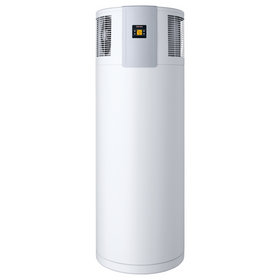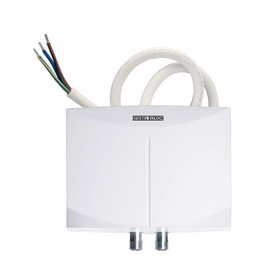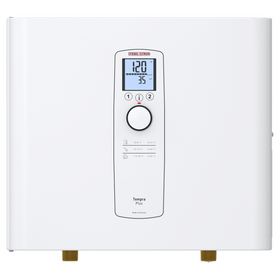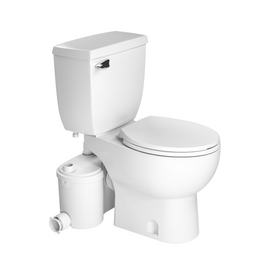
Solar Dehydrators: A DIY Solution For Preserving Crops
Last Updated: Mar 29, 2025You spend all summer growing your crops and enjoying the bounty of your harvest. But when fall draws near and crops begin to slow, it's the gardeners that preserve their crops that can continue to enjoy them. By drying your fruits, herbs, and vegetables, you take seasonal produce and extend its life for, potentially, many months.
But what are some ways to dry your food? Traditionally, hanging foods until they air-dried was one method, or even leaving them out in the shade to allow the sun to dry them out, being another. Now, solar dehydrators make the best of both methods to create unique and incredible results.
Table of Contents
- What Is a Solar Dehydrator?
- How Does a Solar Dehydrator Work?
- Can You Buy a Solar Dehydrator?
- What Are the Benefits of Solar Dehydrators?
- What Are the Cons of Solar Dehydrators?

What Is a Solar Dehydrator?
A solar dehydrator uses the sun's power to dry fruits, vegetables, and herbs without any external energy required. There are various designs for DIY solar dehydrators. This article will focus on the one created by Dennis Scanlin and the Appropriate Technology Program at Appalachian State University. This dehydrator was designed over many years and with the help of various students and teachers.
Prototyped initially to be used in the school's Honduras Solar Education Project in the nineties, it continued to be adapted and modified consistently in the following years. The dehydrator takes advantage of the natural process of heat rising to gradually dry foods while preserving vital nutrients.

How Does a Solar Dehydrator Work?
The system works by first having an intake at the bottom of the solar dehydrator. From here, the air draws into the collector box, where the sunlight passes through the clear glass or plastic cover and absorbs into a dark mesh screen. This screen transfers the absorbed heat to the surrounding air, which then naturally rises to the drying chamber on top. At this point, as the air moves up and out of the collector box through vents. Negative pressure is created at the base of the system, drawing more air and repeating the process. As the warm air reaches the drying chamber, it passes over the fruits, vegetables, and herbs, drawing moisture out of them as it moves through to the vent at the top of the section.

Over the years, the solar dehydrator has been experimented with and modified in various ways. The group found that the dehydrator resulted in higher drying temperatures by adding a double layer of glazing. Single glazed dehydrators still performed optimally, only operating with slightly reduced temperatures to the double glazed counterpart.
Scanlin and others also experimented with utilizing reflectors (aluminum foil, mirrors, reflective mylar) to gather additional solar energy into the system. By adding a vertical reflective wall on the drying chamber, they saw slight increases in the temperatures inside the system and even more from a single reflector mounted at the bottom. Side-mounted reflectors were also experimented with, showing a significant rise in temperature at the cost of needing more attention to adjust the solar dehydrator throughout the day. They concluded that single reflectors were the best option when adding additional solar power to your system.
On top of experimenting with gathering more sunlight, the group also delved into what made the best absorber within the dehydrator's collector chamber. They found that galvanized steel lath painted flat black produced a higher temperature in the drying chamber than the initially tested aluminum screen layers. However, steel lath can be harder to work with more expensive. The researchers also found that two to three layers of the screen or painted steel lath were more than enough for the dehydrator to work effectively. This discovery was contrary to their original design of five layers. Additional layers did add extra heat absorption, but at an increased cost.

Can You Buy a Solar Dehydrator?
Unfortunately, you will not find Dennis Scanlin's solar dehydrator retailing at stores. But he has provided detailed documentation on creating a solar dehydrator at home for Mother Earth News. The prices of the DIY solar dehydrator range depending on the cost of materials needed. With necessary tools already at your disposal, material costs can range from $300 to $500. But at the end of the design, you have a dehydrator that can run every sunny day, saving you money over time with the cost of food preserved and waste prevented.

Now, there are dehydrators for sale at various stores. But the majority of the products you will find for sale at retailers will be exclusively for powered dehydration and require an outlet. The price-point for a plug-in dehydrator will vary depending on the quality and functionality of the product. With standard dehydrators ranging from $60 to over $500, there are various options for every household. The DIY dehydrator is comparable to a higher-end product in material cost. They offer similar drying space and max temperature ratings. However, they are nowhere near as compact as the paid-for options.

Other options you will find available are drying racks which have their place for select herbs and vegetables.

Also, racks that you can use in an Instant Pot are becoming popular.

What Are the Benefits of Solar Dehydrators?
A solar dehydrator is a great way to dry out your food and herb crops. While traditional drying methods put your crops at risk of sun exposure, solar dehydrators indirectly utilize sunshine for preserving your harvest. The primary benefits of properly drying foods, reported by Scanlin, come from how the process affects the nutritional value of food, the survivability of microorganisms, and plant enzyme response.
Nutritional Value
One of the benefits of correctly dehydrating your foods comes from the retention of nutrients. When drying fruits and vegetables, you are removing water from the plant. This process leaves you with more concentrated carbohydrates, fats, and proteins per weight of fresh foods. Some vitamin loss does occur during dehydration, but this can be limited depending on your preparation methods and drying techniques.
Microorganisms
Microorganisms, like all living things, require moisture. Through dehydration, you remove the medium that these creatures thrive, reducing the likelihood that they grow to damage your food. While "microorganism" is a blanket term for microscopic organisms, we are referencing specifically bacteria, mold, and yeast in this discussion. By reducing moisture below 30%, you add an extra layer of protection to your food against the average bacteria or yeast. Molds, on the other hand, generally continue to be problematic down to 12% moisture content. You can take extra measures to either prepare or store your food after dehydration to get the most extended life out of your preserves.
Enzymes
Enzymes can lead to discoloration and the breakdown of plant tissue when damaged. This process can result in a loss of vitamins. Luckily most of these become inactivated at 158F and require moisture to enable activity. There can still be the chance of enzymes surviving the dehydrating process and affecting the final dried product. Extra steps recommended by Scanlin include blanching or sulfuring before drying to deactivate the enzymes.
Food Storage
Besides the benefits drying has for the health of your shelved produce, it benefits you by how much farther your summer harvest can go. Needing only a sunny day to dehydrate your crop, you can extend how long you enjoy the flavors of garden tomatoes or climbing beans for months to come. Using tiny garden methods, like Square Foot Gardening, you can plan out what crops to enjoy and what ones to store. Using this method, you are getting the best of both worlds by enjoying a flavourful treat now and saving some for a later date.

What Are the Cons of Solar Dehydrators?
As great as the solar dehydrator is, it does have limitations, the primary being sunlight requirements. For a solar dehydrator to function optimally, it requires full sun or a partially sunny day. The collectors can absorb more potential energy with direct sunlight, transferring it into the air for better drying. If you live in a location with a lot of shade may have trouble collecting enough light to gather optimal heat. Scalin's reflectors can help with that, but some systems may require additional manual operation for optimal production.
Solar dehydrators also have limited drying space for the amount of time it requires to dry fruits or vegetables. It can dry 11 trays, holding a total of 10 pounds of fruit or vegetables over two sunny days. These numbers vary depending on what you are drying and how warm the days are. Produce with more moisture will take longer to dry.
Also, produce at the bottom of the drying chamber will often dry out faster because they receive the hottest air first. A test done by Scalin showed that the upper layers of the dehydrator drying box fluctuate and can be 50F cooler.
In comparison to plug-in food dehydrators, the solar option is large and bulky. Requiring approximately least seven feet in length and six feet in height, it will take up a good portion of your patio or balcony. If space is limited, this may not be the best option for your site.

Making a Solar Dehydrator may not be the top of a gardener's to-do list. Still, in my opinion, the long-term benefits of owning one outweigh going without one. By extending the use of your crops into the winter months, you are reducing your grocery consumption when it would typically be picking up. While a different appeal than their fresh food counterparts, dried food and herbs have a place in the kitchen, from baking to soup making.
Whether it be for cost or space, starting with a manufactured dehydrator may be how you want to first dabble with extending the life of your harvest. But if you have the time and space, taking advantage of the natural processes of a solar dehydrator will do the same job, with only the sun's light.
Tanner Sagouspe
Tanner Sagouspe has a Masters in Environmental Management and is a Permaculture Designer who promotes tackling the climate crisis at home.










